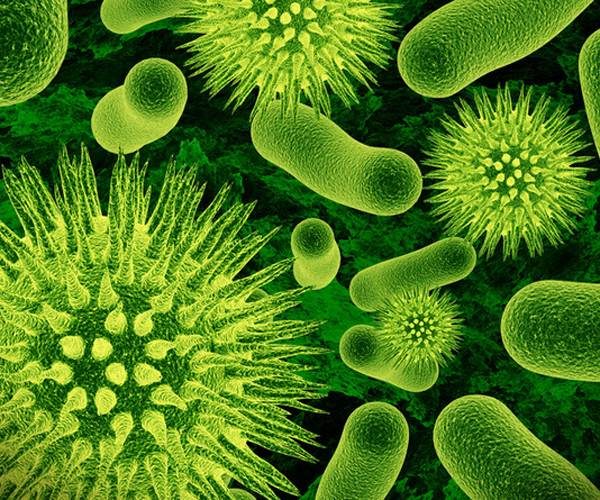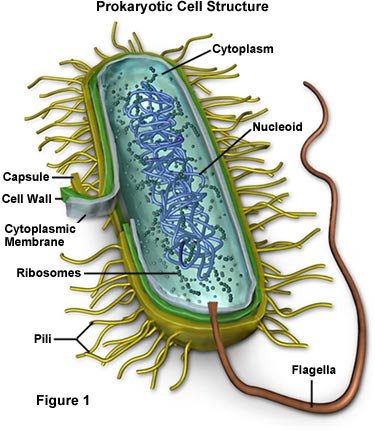Importance of Microorganisms
Microorganism. Also called a microbe or microscopic organism, it is a living being that can only be visualized with the Microscope. The science that studies microorganisms is Microbiology. «Micro» from Greek (tiny, small) and «bio» from Greek (life) tiny living beings. They are organisms endowed with individuality that present, unlike plants and animals, an elementary biological organization. They are mostly unicellular, although in some cases they are cenotic organisms composed of multinucleated, or even multicellular cells.
 | Microorganisms
| Microorganisms
The resolution power of the human eye, that is, its ability to distinguish between two point objects that are very close, is around 0.2 mm at best. Due to this, a very substantial part of the great diversity of living beings that constitute our biosphere escaped human observation until very recent times: it is the group of living beings that we now call microorganisms.
The area of biological science that deals with the study of microorganisms is microbiology. This plot of biological knowledge had a relatively late development compared to others and its birth can be dated to the mid-seventeenth century, when Anton van Leeuwenhoek (Figure 20.1) made the first observations of what we know today as microorganisms through the simple microscope that he had built himself. Like cytology, microbiology languished for the next two hundred years with an almost exclusive dedication to the description and cataloging of the different types of microorganisms that were discovered. It was in the mid-nineteenth century when a renewed interest in some old polemics, such as the theory of spontaneous generation, together with the recognition of the role of microorganisms in the disease and in certain industrial processes, such as fermentations, meant the definitive consolidation of this science.
Origins and evolution
Long before the discovery of microorganisms, humanity already knew some processes due to the vital activity of these, for example: the fermentation of grape juice, milk, etc.
In the early stages, doctors and naturalists strove to discover the causes of diseases. At that time, they plagued epidemics such as leprosy, smallpox, plague, typhus.
With the development of Physics, Chemistry and Medicine accumulated knowledge; and the development of Optics allows to see the smallest organisms. The first one who saw and described the microbes was the Dutch Antonie van Leeuwenhoek who built simple microscopes with 300-fold magnification. Then in the nineteenth century more complex microscopes were built and in 1860, Pasteur demonstrated the microbial nature of alcohol, milk and acetic fermentation and discovered the existence of a life form in the absence of air (anaerobiosis) in some microorganisms. Another scientist, Robert Koch, contributed to the development of this science.
- MICROORGANISMS WITH CELLULAR ORGANIZATION.
As has already been shown when dealing with their classification, microorganisms with cellular organization completely cover two of the three domains in which the set of living beings has been divided: the bacterium domain and the archaea domain, and encompass a significant part of the third of them, the eukarya domain. Since the structure and physiology of prokaryotic and eukaryotic cells have already been dealt with in other chapters, we will briefly discuss some general aspects of these microorganisms and then proceed to a more detailed analysis of microorganisms with subcellular organization.

- MICROORGANISMOS PROCARIONTES
Bacteria (Figure 20.8) and archaebacteria share most of their morphological characteristics, so the existence of the latter as a differentiated group went unnoticed for a long time. The differences between the two groups are above all at the biochemical level and, to a certain extent, also ecological. Among the biochemical characteristics that differentiate both groups is the widespread presence of introns in the genes of the archaebacteria, while in the bacteria they are practically non-existent. This feature of the archaebacteria is shared with the eukaryotic cells, which supports the idea, previously stated on the basis of the analysis of sequences of some genes, of a greater evolutionary relationship between both groups than either of them exhibits in relation to the bacteria In other words: there was a common ancestor of archaea and eukaryotes, which was not of bacteria. Such circumstance constitutes a solid argument support in favor of the phylogenetic classification that we have called "of the three domains".

- MICROORGANISMS EUCARIONTES
The members of the ancient protist kingdom, that is, the unicellular eukaryotes, were traditionally divided into three groups: protozoa, unicellular algae and unicellular fungi. This division was based on certain characteristics such as the presence or absence of a cell wall, the structure of movement organs such as cilia and flagella, and the presence or absence of photosynthetic pigments. At present, studies of DNA sequencing and the ultrastructure of different cellular components have completely "dynamited" the primitive protists kingdom, yielding some 60 strains of eukaryotic microorganisms to which only in a few cases it seems possible to group them into higher taxonomic categories. It seems reasonable to think that when eukaryotic organisms evolved, between 1,500 and 2,000 million years ago, from ancestral prokaryotes, they had a great adaptive success colonizing rapidly a multitude of different habitats. This brought about a great diversification that has been reflected in the large number of strains that have survived to this day.
- IMPORTANCE AND UTILITY OF MICROORGANISMS
In addition to the indispensable role that microorganisms play in the functioning of ecosystems and biogeochemical cycles, many of them also have a special interest for human beings. We will analyze some examples below.
The food industry has been using, since very early times, the metabolic peculiarities of different types of microorganisms to obtain a wide range of products. The use of anaerobic microorganisms that produce changes in food through fermentation stands out in this aspect. Thus, certain fermenting bacteria, which transform the sugars in milk into lactic acid, are used for the production of different types of dairy products such as yoghurts, curds and the like. Others are used in the production of pickles (acid cabbages, olives, etc.).
On the other hand, yeasts, which ferment the sugars of different vegetable products giving rise to ethanol and CO2, are widely used in the production of a wide variety of alcoholic beverages and also in the manufacture of bread and pastry products.
- Bacterias
The Bacterium is a single cell organism belong to the realm monera and are unicellular. Its shape can be spherical, spiral, etc. They can exist as individual organisms, forming chains, groups or pairs, trios ... Bacteria are one of the most abundant forms of life on earth. They have a length between 0.4 and 14 μm and about 0.2 to 12 μm in width. Consequently, they can only be seen through a microscope. The bacteria reproduce by multiplying the DNA, and dividing it into two independent cells. Under normal circumstances this process takes between 30 and 60 minutes.
Some bacteria can form spores. These spores are characterized by a protective layer resistant to heat and that protects the bacteria from lack of moisture and food.
Bacteria have a specific ecological functional role. For example, some perform the degradation of organic matter, others integrate their metabolism with that of human beings.
Although some bacteria are pathogenic (causing various diseases), a large part of them are harmless or even good for your health.
- Virus
Viruses are ultramicroscopic biological systems (can only be observed with an electron microscope) that can cause infections and that only reproduce in host cells. Viruses outside cells are in inactive form. Viruses are characterized by a protective layer. Its shape can be spiral, spherical or as small cells, between 0.02 and 0.009 in size. By having a smaller size than bacteria, you can pass filters that allow the retention of bacteria.
Unlike bacteria and parasitic protozoa, viruses contain a single type of nucleic acid (RNA or DNA). It can not reproduce on its own, but the metabolism of the host cell is needed to ensure that the DNA is copied into the host cell, for its reproduction.
Unlike bacteria, viruses are not present in humans naturally. When people are affected by a virus, they are usually eliminated from the human body by secretions

References for more information
https://simple.wikipedia.org/wiki/Microorganism
https://www.biocote.com/blog/microorganisms-an-introduction/
https://biologydictionary.net/microorganism/